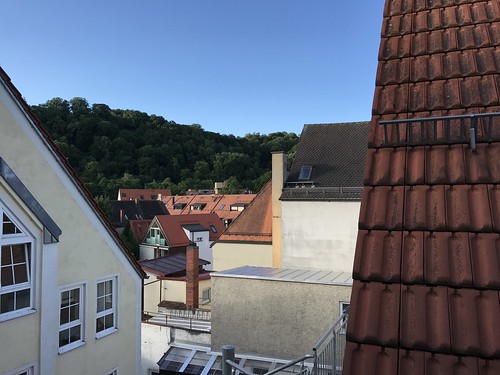Ween viro-immunological parameters (CD4+ T cell count and pVL), time without therapy and CyFlow data.Biomarkers of HIV Control after PHIFigure 6. Percentages of activated CD4+ (upper panel) and CD8+ (lower panel) T cells. Activated cells were considered those expressing high levels of CD38 (CD38 bright) and MHC class II (HLA-DR) molecules. Boxes indicate median values with 25th and 75th percentiles, whiskers show minimum and maximum. doi:10.1371/journal.pone.0050728.gResults PHI cohort and viro-immunological parametersCD4+ T cell count and pVL were monitored in PHI patients from the first month up to 4 years after infection. It has to be underlined that the number of missing data (in terms of analysis not performed or data not reliable for technical problems), even if carefully considered by the statistical methods we used, was negligible in all cases, i.e. ,2 . Figure 1, upper panel, shows that CD4+ T cell count increased during the first three months, with a gradual decline in following months (p = 0.0123). In parallel, we observed a decrease in plasma viral load (p = 0.0607) until the onset of a stabilization of plasma viral load by the second month of infection (Figure 1, lower panel). MedChemExpress Deslorelin Indeed, at months 2, 3, 4, 6, 12, 24 and 36, viral load was significantly reduced in comparison to M1.Figure 5. Trends of the Treg frequency (upper panel), absolute number (middle panel) and activated Treg (lower panel), in the patients under investigation. Tregs were considered as those cells that were CD3+,CD4+, positive to FoxP3, highly positive (i.e., bright) to CD25 and negative to CD127. Boxes indicate median values with 25th and 75th percentiles, whiskers show minimum and maximum. doi:10.1371/journal.pone.0050728.gSurvival analysis and Cox proportional hazards model were also performed. STATA 11 for Mac (College Station, TX) was used for Lecirelin performing statistical analyses and obtaining part of the graphics.CD107a expression dominates CD4 gag- and nef- specific responseWe studied CD4+ and CD8+ T lymphocyte specific polyfunctional response to gag and nef peptides, considering the production or expression of molecules such as IFN-c, CD107a, CD154 and IL2. We identified both the “total” response, i.e. the sum of all cellsBiomarkers of HIV Control after PHIFigure 7. Correlation between the level of CD4+ T cell activation status and pVL levels, at all months analyzed. Activated cells were identified as described in the legend to Figure 6. doi:10.1371/journal.pone.0050728.gpositive for at least one marker (that provides the overall “frequency” of 1516647 responding cells among T lymphocytes), and the “qualitative” response, which describes the contribution of each functional pattern to the total specific response. Figure 2 shows a significant change over time in the percentage of total CD8+ gagspecific cells, and indicates that CD8 response was higher at M3 than at M1 or M6. The same trend was found considering those gag-specific CD8+ T lymphocytes that produced IFN-c, or those that expressed CD107a. We could not detect  any significant variation in the percentage of gag-specific CD4+ T cells, or in the percentages of both nef-specific CD4+ and CD8+ T cells over time. Regarding the quality of T cell specific response to gag (Figure 3, upper part), we found that at all the time points .50 of gagspecific CD4+ T lymphocytes were CD107a; only a low percentage was CD154+ or CD154+,IFN-c+. IL-2 production was detectable only at M6, and in a negligible amount of.Ween viro-immunological parameters (CD4+ T cell count and pVL), time without therapy and CyFlow data.Biomarkers of HIV Control after PHIFigure 6. Percentages of activated CD4+ (upper panel) and CD8+ (lower panel) T cells. Activated cells were considered those expressing high levels of CD38 (CD38 bright) and MHC class II (HLA-DR) molecules. Boxes indicate median values with 25th and 75th percentiles, whiskers show minimum and maximum. doi:10.1371/journal.pone.0050728.gResults PHI cohort and viro-immunological parametersCD4+ T cell count and pVL were monitored in PHI patients from the first month up to 4 years after infection. It has to be underlined that the number of missing data (in terms of analysis not performed or data not reliable for technical problems), even if carefully considered by the statistical methods we used, was negligible in all cases, i.e. ,2 . Figure 1, upper panel, shows that CD4+ T cell count increased during the first three months, with a gradual decline in following months (p = 0.0123). In parallel, we observed a decrease in plasma viral load (p = 0.0607) until the onset of a stabilization of plasma viral load by the second month of infection (Figure 1, lower panel). Indeed, at months 2, 3, 4, 6, 12, 24 and 36, viral load was significantly reduced in comparison to M1.Figure 5. Trends of the Treg frequency (upper panel), absolute number (middle panel) and activated Treg (lower panel), in the patients under investigation. Tregs were considered as those cells that were CD3+,CD4+, positive to FoxP3, highly positive (i.e., bright) to CD25 and negative to CD127. Boxes indicate median values with 25th and 75th percentiles, whiskers show minimum and maximum. doi:10.1371/journal.pone.0050728.gSurvival analysis and Cox proportional hazards model were also performed. STATA 11 for Mac (College Station, TX) was used for performing statistical analyses and obtaining part of the graphics.CD107a expression dominates CD4 gag- and nef- specific responseWe studied CD4+ and CD8+ T lymphocyte specific polyfunctional response to gag and nef peptides, considering the production or expression of molecules such as IFN-c, CD107a, CD154 and IL2. We identified both the “total” response, i.e. the sum of all cellsBiomarkers of HIV Control after PHIFigure 7. Correlation between the level of CD4+ T cell activation status and pVL levels, at all months analyzed. Activated cells were identified as described in the legend to Figure 6.
any significant variation in the percentage of gag-specific CD4+ T cells, or in the percentages of both nef-specific CD4+ and CD8+ T cells over time. Regarding the quality of T cell specific response to gag (Figure 3, upper part), we found that at all the time points .50 of gagspecific CD4+ T lymphocytes were CD107a; only a low percentage was CD154+ or CD154+,IFN-c+. IL-2 production was detectable only at M6, and in a negligible amount of.Ween viro-immunological parameters (CD4+ T cell count and pVL), time without therapy and CyFlow data.Biomarkers of HIV Control after PHIFigure 6. Percentages of activated CD4+ (upper panel) and CD8+ (lower panel) T cells. Activated cells were considered those expressing high levels of CD38 (CD38 bright) and MHC class II (HLA-DR) molecules. Boxes indicate median values with 25th and 75th percentiles, whiskers show minimum and maximum. doi:10.1371/journal.pone.0050728.gResults PHI cohort and viro-immunological parametersCD4+ T cell count and pVL were monitored in PHI patients from the first month up to 4 years after infection. It has to be underlined that the number of missing data (in terms of analysis not performed or data not reliable for technical problems), even if carefully considered by the statistical methods we used, was negligible in all cases, i.e. ,2 . Figure 1, upper panel, shows that CD4+ T cell count increased during the first three months, with a gradual decline in following months (p = 0.0123). In parallel, we observed a decrease in plasma viral load (p = 0.0607) until the onset of a stabilization of plasma viral load by the second month of infection (Figure 1, lower panel). Indeed, at months 2, 3, 4, 6, 12, 24 and 36, viral load was significantly reduced in comparison to M1.Figure 5. Trends of the Treg frequency (upper panel), absolute number (middle panel) and activated Treg (lower panel), in the patients under investigation. Tregs were considered as those cells that were CD3+,CD4+, positive to FoxP3, highly positive (i.e., bright) to CD25 and negative to CD127. Boxes indicate median values with 25th and 75th percentiles, whiskers show minimum and maximum. doi:10.1371/journal.pone.0050728.gSurvival analysis and Cox proportional hazards model were also performed. STATA 11 for Mac (College Station, TX) was used for performing statistical analyses and obtaining part of the graphics.CD107a expression dominates CD4 gag- and nef- specific responseWe studied CD4+ and CD8+ T lymphocyte specific polyfunctional response to gag and nef peptides, considering the production or expression of molecules such as IFN-c, CD107a, CD154 and IL2. We identified both the “total” response, i.e. the sum of all cellsBiomarkers of HIV Control after PHIFigure 7. Correlation between the level of CD4+ T cell activation status and pVL levels, at all months analyzed. Activated cells were identified as described in the legend to Figure 6.  doi:10.1371/journal.pone.0050728.gpositive for at least one marker (that provides the overall “frequency” of 1516647 responding cells among T lymphocytes), and the “qualitative” response, which describes the contribution of each functional pattern to the total specific response. Figure 2 shows a significant change over time in the percentage of total CD8+ gagspecific cells, and indicates that CD8 response was higher at M3 than at M1 or M6. The same trend was found considering those gag-specific CD8+ T lymphocytes that produced IFN-c, or those that expressed CD107a. We could not detect any significant variation in the percentage of gag-specific CD4+ T cells, or in the percentages of both nef-specific CD4+ and CD8+ T cells over time. Regarding the quality of T cell specific response to gag (Figure 3, upper part), we found that at all the time points .50 of gagspecific CD4+ T lymphocytes were CD107a; only a low percentage was CD154+ or CD154+,IFN-c+. IL-2 production was detectable only at M6, and in a negligible amount of.
doi:10.1371/journal.pone.0050728.gpositive for at least one marker (that provides the overall “frequency” of 1516647 responding cells among T lymphocytes), and the “qualitative” response, which describes the contribution of each functional pattern to the total specific response. Figure 2 shows a significant change over time in the percentage of total CD8+ gagspecific cells, and indicates that CD8 response was higher at M3 than at M1 or M6. The same trend was found considering those gag-specific CD8+ T lymphocytes that produced IFN-c, or those that expressed CD107a. We could not detect any significant variation in the percentage of gag-specific CD4+ T cells, or in the percentages of both nef-specific CD4+ and CD8+ T cells over time. Regarding the quality of T cell specific response to gag (Figure 3, upper part), we found that at all the time points .50 of gagspecific CD4+ T lymphocytes were CD107a; only a low percentage was CD154+ or CD154+,IFN-c+. IL-2 production was detectable only at M6, and in a negligible amount of.